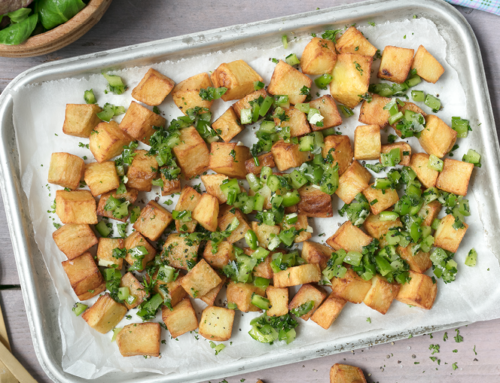Prawn paella is a beloved Spanish dish that has gained international fame for its rich flavors and vibrant colors. However, few know the untold story behind this perfect culinary creation. The origins of prawn paella can be traced back to Valencia, where it was born as a humble peasant dish during the 19th century. It stood crafted by farmers who used readily available ingredients such as rice, vegetables, and the occasional rabbit or chicken.
Over time, prawn paella evolved into a celebration dish enjoyed on special occasions and gatherings with family and friends. The addition of succulent prawns elevated the flavors to new heights, making it a luxurious treat fit for royalty. Today, prawn paella continues to delight palates all around the world, but understanding its humble beginnings adds an extra layer of appreciation for this iconic Spanish delicacy.
The History and Popularity of Paella
Paella, a traditional Spanish dish known for its vibrant colors and rich flavors, has a long and fascinating history. Believed to have originated in Valencia, Spain during the 18th century, paella stood initially cooked by farmers in large open-air pans over an open fire. The dish’s name comes from the Latin word patella, meaning pan, which perfectly encapsulates its cooking method. Over time, different variations of paella emerged across Spain using various ingredients such as rabbit, chicken, snails, or vegetables. However, one variation that has gained immense popularity around the world is prawn paella.
Prawn paella captures the essence of seafood lovers with its delectable combination of saffron-infused rice and succulent prawns.
The Origin of Prawn Paella

Prawn paella is a delicious and iconic dish that has become synonymous with Spanish cuisine. But have you ever wondered about its origins? The history of prawn paella can be traced back to the Valencia region in Spain, where it was born centuries ago. This mouthwatering creation is believed to have been invented by farmers and fishermen who used the local ingredients readily available to them.
The key component of prawn paella is, of course, the succulent prawns. In the coastal town of Valencia, prawns were abundant and easily caught, making them an integral part of the traditional dish. The combination of these fresh seafood delicacies with saffron-infused rice created a flavor explosion that became incredibly popular among locals and visitors alike.
Over time, as tourism grew in Spain, so did the popularity of prawn paella.
Ingredients and Preparation Methods
When it comes to making a delectable prawn paella, the choice of ingredients and the right preparation methods can make all the difference. The star of this dish, prawns, should be fresh and succulent to enhance the flavors in every bite. Look for large prawns at your local fish market or grocery store – these provide a satisfying texture and are easier to cook than smaller varieties.
In addition to prawns, other essential ingredients include bomba rice, saffron threads, garlic cloves, smoked paprika, tomatoes, onions, bell peppers, and a good quality vegetable or seafood stock. The combination of these ingredients creates a harmonious medley of flavors that blend together perfectly with every spoonful.
The Cultural Significance of Prawn Paella
Prawn paella is not just a delicious dish; it holds immense cultural significance in Spain and has become an iconic representation of Spanish cuisine worldwide. With its vibrant colors, rich flavors, and impressive presentation, symbolizes the essence of Spanish culture and heritage. This traditional rice-based dish originated in Valencia, Spain, where it was traditionally cooked outdoors over an open fire.
The cultural significance of prawn paella lies in its connection to community and celebration. In Spain, this dish stands often prepared for large gatherings or special occasions such as weddings or festivals. The act of cooking paella brings people together, fostering a sense of unity and belonging within the community. It represents the joyous spirit of sharing good food with loved ones while celebrating life’s milestones.
Furthermore, prawn paella showcases the bounty of the sea and emphasizes the importance of fresh ingredients in Spanish cuisine.
Regional Variations and Unique Twists
The shrimp is a classic Spanish dish that has gained worldwide popularity. Not only is it known for watering flavors, but also for regional changes and unique turns. Spanish various regions in Spain, shrimp offers an interesting combination of local ingredients and cooking techniques. Which makes each version separate and unforgettable.
One such variation is the Valencian style paella, considered to be the original recipe. Originating from the coastal region of Valencia, this version features succulent prawns combined with short-grain Bomba rice cooked in saffron-infused broth. The result is a vibrant yellow dish bursting with flavors that tempt even the most discerning palates.
Tips for Cooking the Perfect Prawn Paella
If you’re a fan of seafood and Spanish cuisine, then prawn paella is a must-try dish. This classic Spanish rice dish stands filled with succulent prawns, fragrant saffron, and an array of colorful vegetables. However, cooking the perfect prawn paella can be a bit tricky if you’re not familiar with the process. But fret not! We’ve obtained you covered with some expert tips to ensure that your turns out absolutely delicious.
Firstly, it’s crucial to use high-quality ingredients for the best results. Fresh prawns are essential for achieving that juicy and flavorful taste in your paella. Look for large-sized prawns as they tend to have more flavor and texture. Additionally, using quality saffron strands will give your dish that distinct aroma and vibrant yellow color.
Another important tip is to properly season your paella.










I do believe all the ideas youve presented for your post They are really convincing and will certainly work Nonetheless the posts are too short for novices May just you please lengthen them a little from subsequent time Thanks for the post